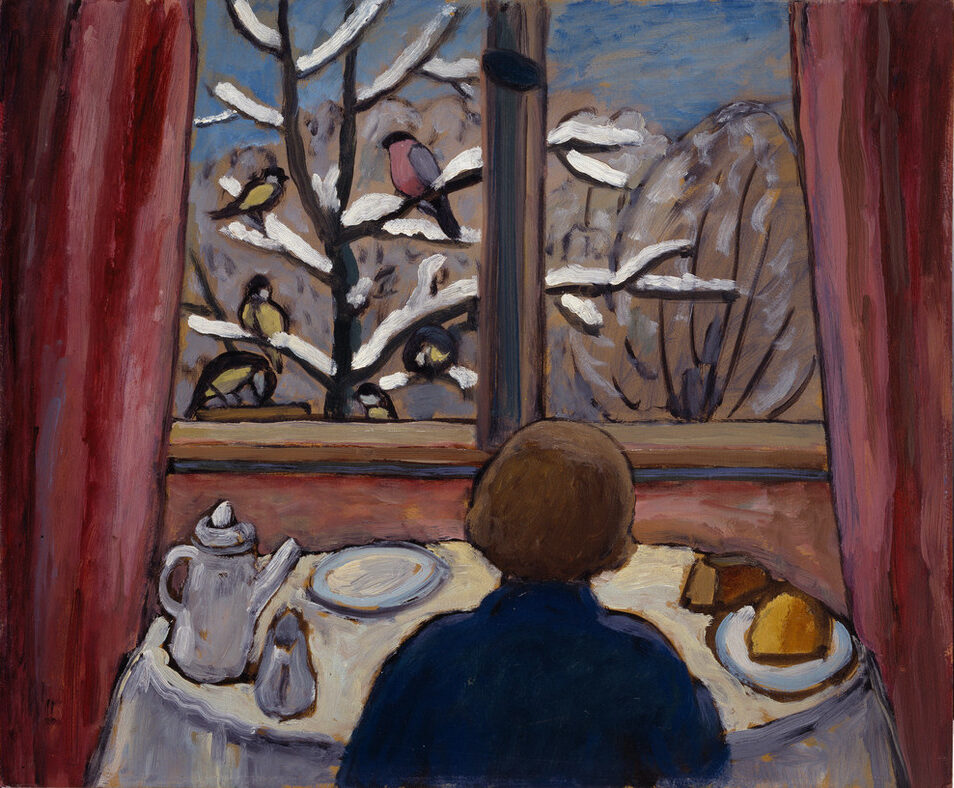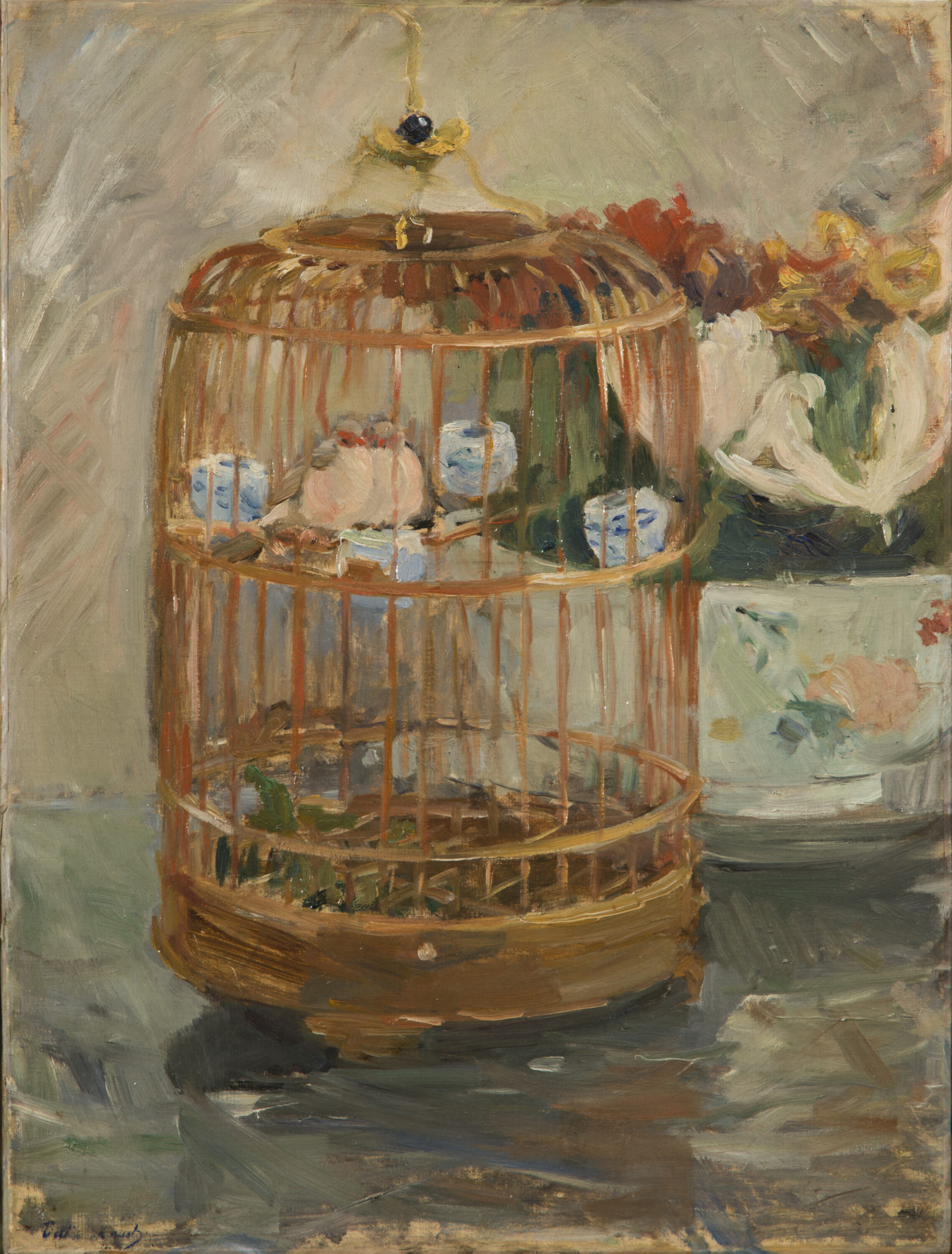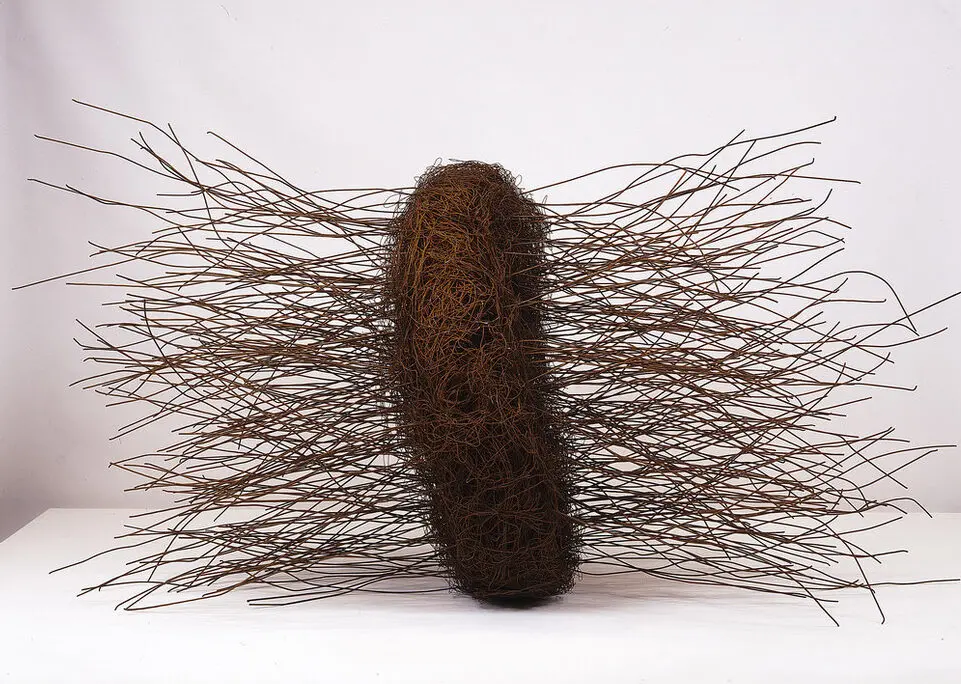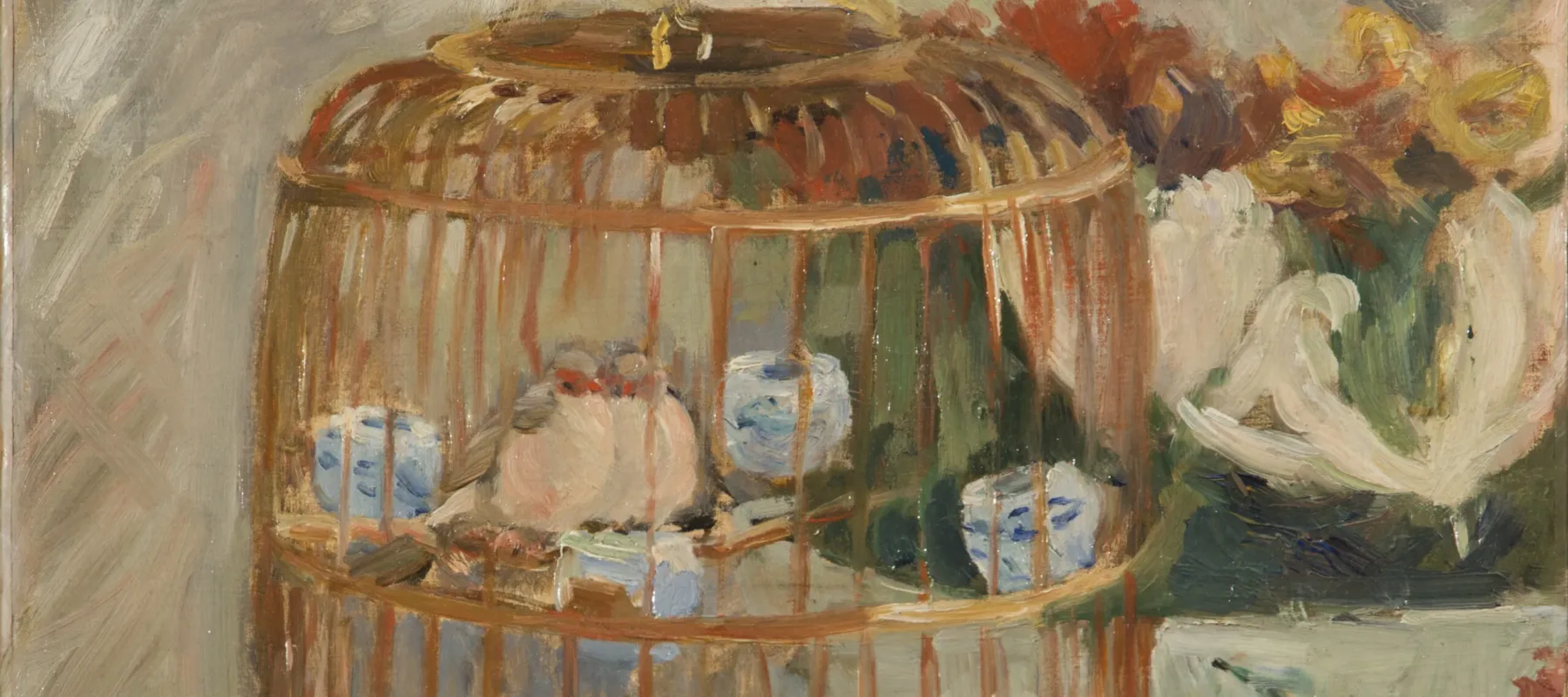A chorus of birds hails the first day of spring, prompting a look at avian imagery in NMWA’s collection.

As a popular motif throughout art history, birds can signify freedom or transition. But keep in mind—these works are no mere flights of fancy.
German expressionist painter Gabriele Münter’s Breakfast of the Birds may indicate this seasonal change. Seated at a breakfast table, a solitary woman gazes through a window at a brood of birds perched on snow-covered branches. Perhaps the snow is melting and migratory birds have just returned. Sometimes interpreted as reflective and peaceful, the figure in this work, with her back to the viewer, has alternatively been seen as isolated and lonely. Scholars have conjectured that the depicted woman may be Münter herself. Münter’s style of heavy lines, simplified forms, and compressed space adds to a feeling of coziness—or entrapment.

Where Münter’s work depicts birds outdoors, Impressionist painter Berthe Morisot’s The Cage includes two enclosed birds. This still-life displays a bronze birdcage and a bowl of flowers set against an otherwise ambiguous background. With a spring-colored palette of soft browns, whites, and greens, Morisot’s oil-on-canvas work takes on a watercolor quality.
Morisot’s paint application is sketchy and unrestrained, due in part to her experimental use of an unprimed canvas. The two nestled birds are nearly lost amid the choppy dabs of color.
Contemporary Brazilian sculptor Frida Baranek’s dense iron construction, Untitled, 1991, resembles a wiry nest. As one of her large-scale abstract metal sculptures, her work explores the tension between organic forms and inorganic materials. Built from rusted industrial wire and weighing 90 pounds, Baranek’s sculpture appears surprisingly light and airy. Long wires protruding horizontally from the sculpture seem to lift the work—like its very own set of wings.

What other works in NMWA’s collection conjure images of spring for you?

